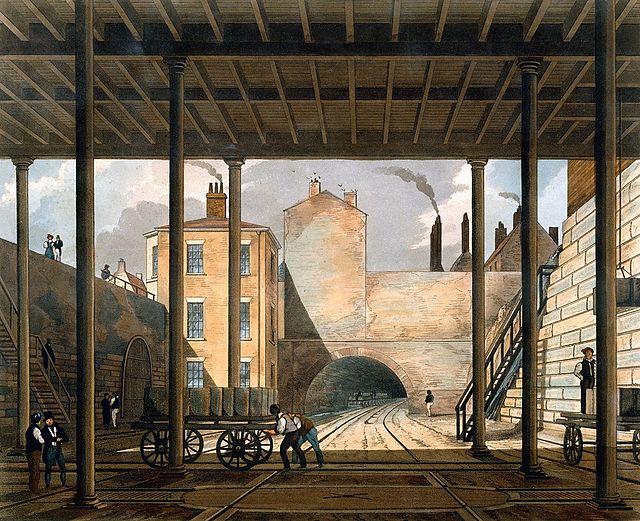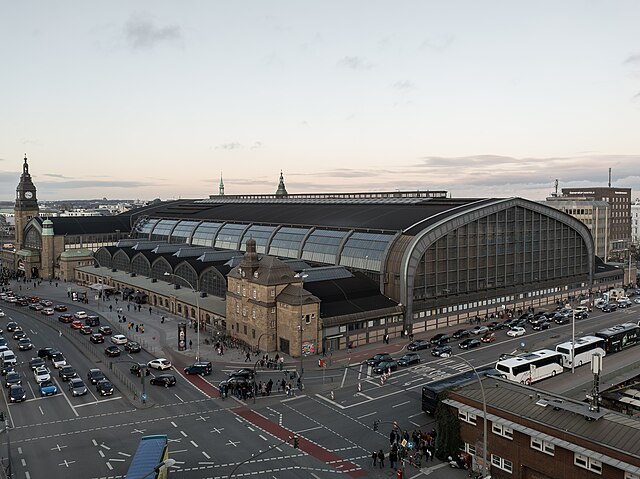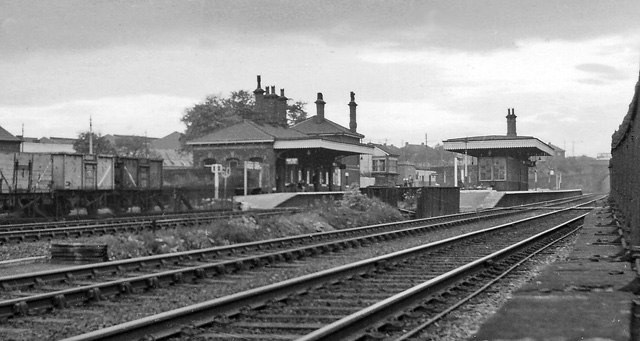A goods station or freight station is, in the widest sense, a railway station where, either exclusively or predominantly, goods, such as merchandise, parcels, and manufactured items, are loaded onto or unloaded off of ships or road vehicles and/or where goods wagons are transferred to local sidings.
Typical loading platform in goods station in small country town (abandoned)
Reached by a 1.24-mile (2 km) long tunnel, the 1830 Park Lane Goods Terminus at Liverpool's docks was the world's first station built entirely for freight.
Goods station with fan of sidings and hump signals at Rostock, East Germany, 1986
Former goods station at Linz, Austria, shortly before its demolition (circa 2006)
A train station, railroad station, or railroad depot and railway station is a railway facility where trains stop to load or unload passengers, freight, or both. It generally consists of at least one platform, one track, and a station building providing such ancillary services as ticket sales, waiting rooms, and baggage/freight service. Stations on a single-track line often have a passing loop to accommodate trains travelling in opposite direction.
Hamburg Hauptbahnhof, Germany, one of the busiest train stations in Europe
Broad Green station, Liverpool, England, shown in 1962, opened in 1830, is the oldest station site in the world still in use as a passenger station.
Baker Street station, London, opened in 1863, was the world's first station to be completely underground. Its original part, seen here, is just below the surface and was constructed by cut-and-cover tunnelling.
Liverpool Lime Street station's frontage resembles a château and is the world's oldest used terminus.








